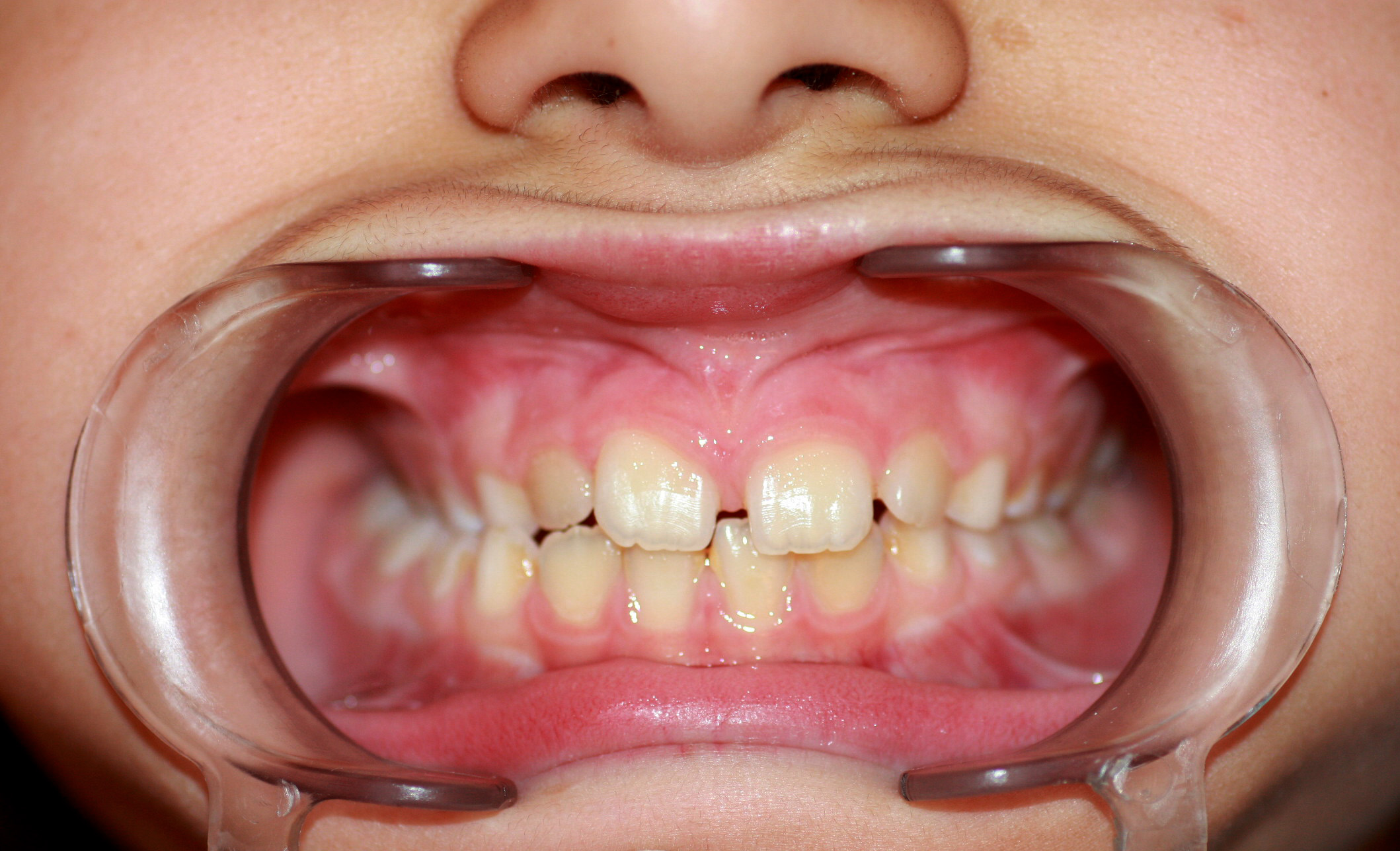[et_pb_section bb_built=”1″][et_pb_row][et_pb_column type=”4_4″][et_pb_text _builder_version=”3.13.1″]
It is recommended to make the first consultation to the orthodontist before reaching the age of seven is why from the six years the first permanent molars erupt and the basic structure of the bite is formed.
Orthodontics faces problems that go far beyond aligning teeth, and faces, on the contrary, the correction of alterations of the jaws, of the face and, above all, of the functional disorders of mastication. When there is an alteration in the growth of the jaws that does not allow a correct development, the patient requires an orthopedic treatment.
The objectives are:
- Correct the width, length and height of the jaws.
- Modify growth, when it is altered.
- Favor a better dental eruption.
- Decrease or eliminate dental crowding. Create space for the teeth that must still come out.
- Correct finger sucking habits or breathing through the mouth.
- Correct facial asymmetries by modifying the growth of the jaws.
INITIAL EXAM
In this first contact with us, topics such as the possible duration of your treatment, the different options that your malocclusion has to be treated with its advantages and disadvantages, and the probable fees will be discussed.
If the treatment is indicated, then we will proceed to take the records for the most in-depth study of your case, this involves taking facial and dental photographs, models of your mouth and x-rays.
Each case is evaluated and a treatment plan is structured to achieve the maximum result in a minimum time.
FIRST PHASE
The purpose of a first phase of treatment is to help the development of children’s arcades by creating space for the eruption of permanent teeth and improving the relationship between the upper and lower arches.
Children sometimes see early signs of problems with growth and development, an upper or lower arch that grows too much or that does not develop sufficiently can benefit from an early orthopedic phase. Early correction may prevent further removal of permanent teeth by overcrowding or to treat protruding teeth. Leaving some conditions untreated until the eruption of all the permanent teeth could result in an imbalance of the jaw bones too severe to achieve an ideal result later with brakets.
To maintain the results of the first phase and get the permanent teeth to erupt, retainers are placed at night between the two phases.
At the age of 9-12 years, children change 12 temporary teeth, during this period, regular appointments will be made every 6 months to observe the replacement and adjustment of retainers.
The treatment is designed individually to maximize cosmetic improvement and treatment mechanics.
The most innovative and least invasive techniques will be used to comfortably modify the shape of your arch and align your teeth.
Before starting treatment and placing the devices in the mouth, a thorough study of your facial features, personal needs and other personal conditions is made to determine a strategic treatment plan that enhances the structure and facial balance along with the alignment of the arches for optimal facial aesthetics.
SECOND STAGE
The goal of the second phase of treatment is to correctly position all permanent teeth and maximize their function. This is achieved by placing braces on all upper and lower permanent teeth.
Due to the achievements of the first phase of treatment, the second phase of treatment requires less cooperation in the second phase of treatment by the patient (often less use of the extraoral anchor and elastics). Often we will eliminate the need for extractions and considerably reduce the time to wear braces.
Advantages of performing a first and second phase:
- Positive influence of the maxillary bones.
- Improves the width of the dental arches.
- Reduces the need to remove permanent teeth.
- Reduces or eliminates the need for arcade surgery.
- Lower risk of trauma to the anterior teeth when they protrude excessively.
- Correct harmful oral habits.
- Improves aesthetics and self-esteem.
- Simplifies and shortens the duration of treatment of the second phase in definitive dentition.
- Increases the stability of the final result of the treatment.
- Reduces the likelihood of teeth being impacted on the bone.
- It favors a correct phonation.
- Guide the permanent teeth to a more favorable position.
- Improves labial competence.
- Preserve or gain space for teeth that are erupting.
- Improved cooperation before the teen age when children are busiest
TYPES OF TREATMENTS
- Dental replacement controls
- Early treatments
- First phases of treatment
- Orthodontics of adults with metallic or aesthetic braces
- Cosmetics
- Surgical treatments
- Retention controls
Learn more about your health and well-being at Pharmamedic.
[/et_pb_text][/et_pb_column][/et_pb_row][/et_pb_section]






